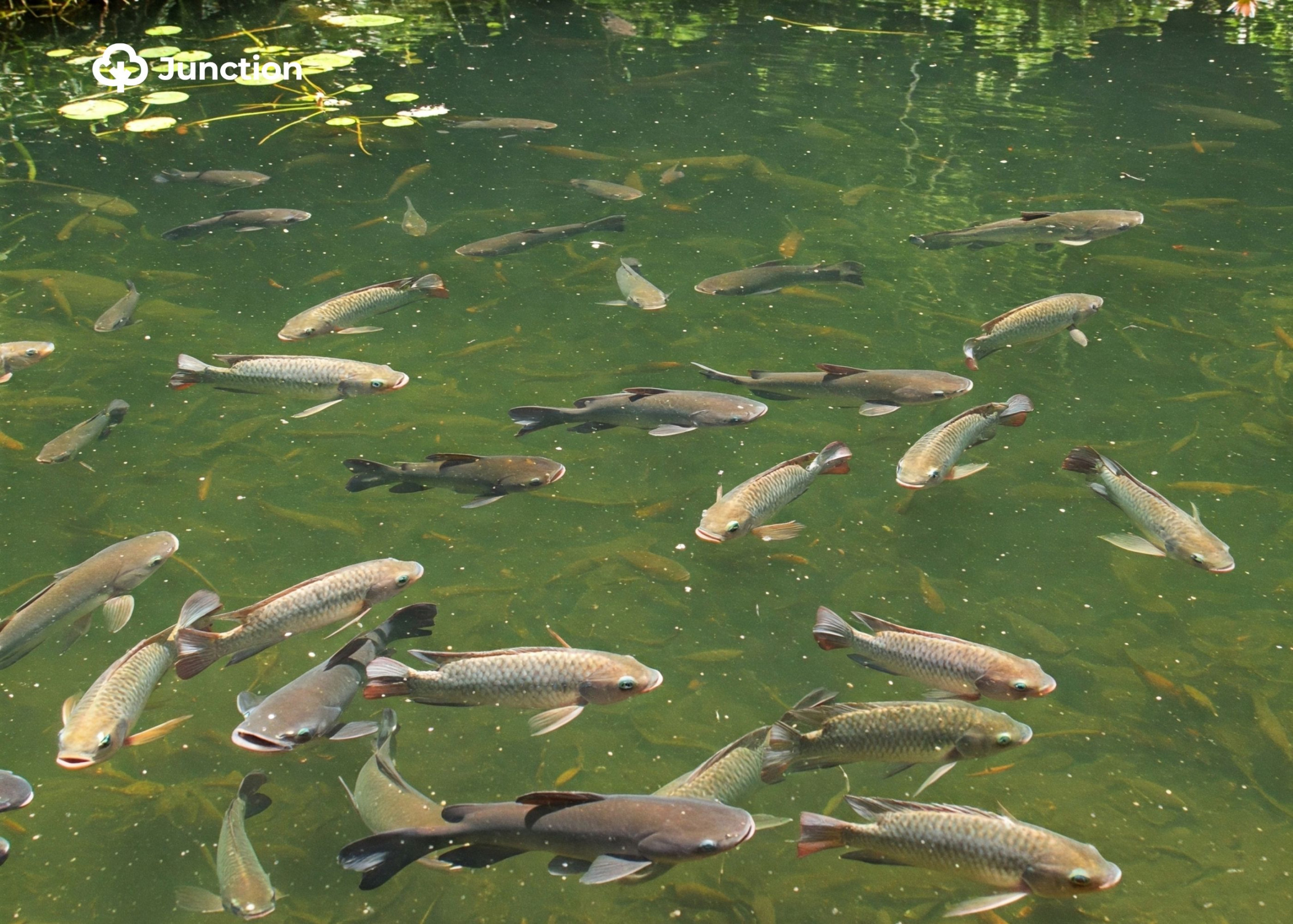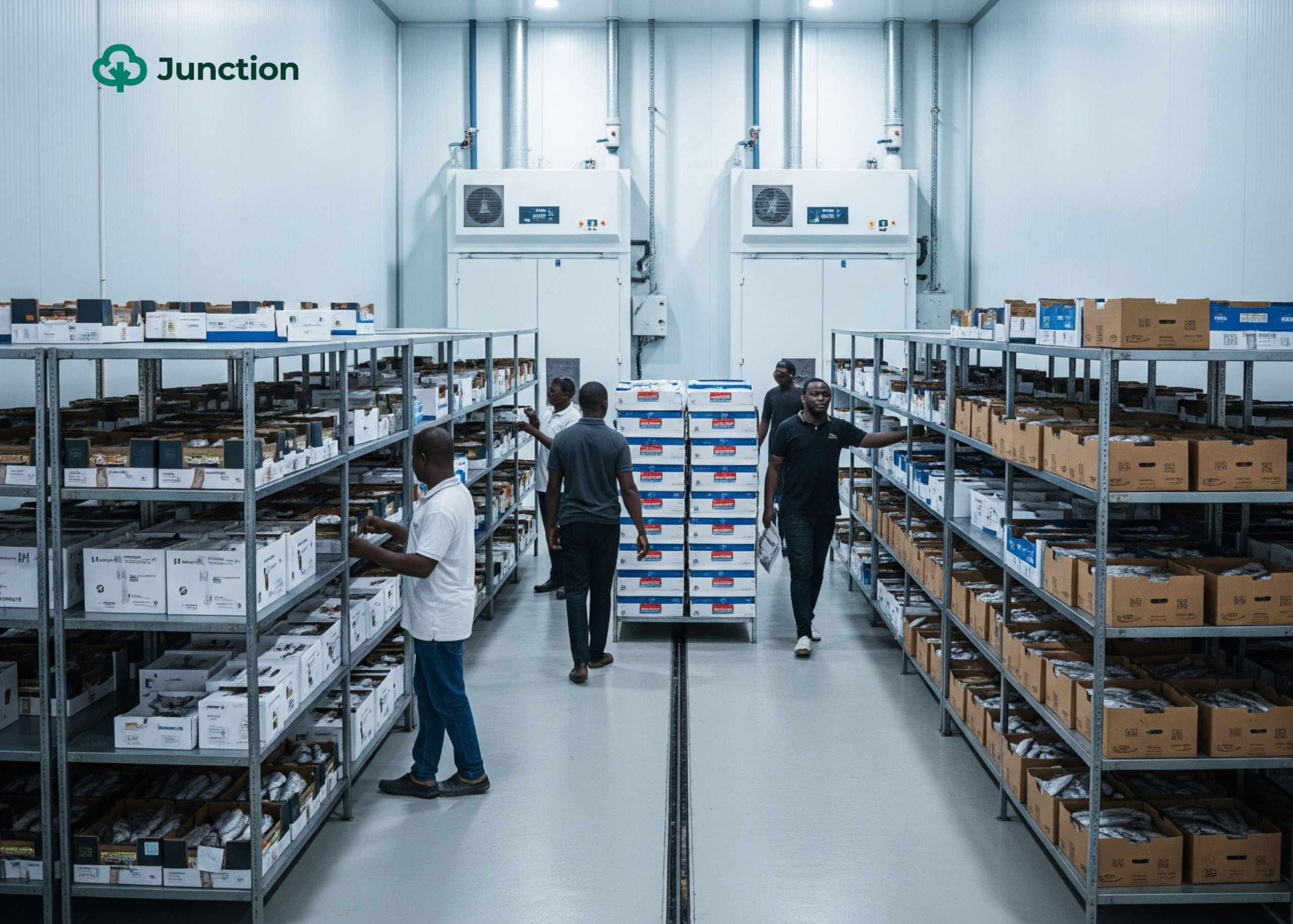Starting a fish farm in Nigeria is exciting, especially for beginners eager to tap into the country’s booming aquaculture industry. However, a common dilemma arises early on: Should you farm catfish or tilapia?
The debate over which is the best to venture into has been on for quite a while, and it is even gaining more ground now with the advancement in fishing practice. The need for Nigerian farmers to ensure a good return on investment (ROI) in the face of the rising fish feed cost challenge is also an important factor. For beginners, especially, making this decision hinges on several key questions:
- Which fish species is more profitable for a first-time farmer?
- Which is easier to raise, considering skill, time, cost, and risks?
- Which aligns best with your goals, location, and available resources?
While catfish and tilapia are popular, profitable, and staples in Nigerian diets, they differ significantly in farming requirements, costs, disease tolerance, and market dynamics.
This article provides a guide for aspiring or beginner fish farmers to make the right decision. First, is this a venture worthy of your investment?
How lucrative is fish farming (aquaculture) in Nigeria?
Despite its many challenges, fish farming remains one of Nigeria’s most promising agricultural ventures. It is especially attractive to youths seeking viable income sources amid high unemployment. Nigeria leads Sub-Saharan Africa in aquaculture production and ranks second in Africa overall.
However, the country consumes about 3.6 million tons of fish annually, but produces just over 1 million tons locally. This results in a massive 2.5 million tons deficit, costing Nigeria roughly ₦1.3 trillion (about $1 billion) annually in imports. This supply gap presents a golden opportunity for new fish farmers.
Catfish has traditionally dominated Nigeria’s aquaculture, favoured for its taste and market demand. Recently, tilapia farming has gained traction, with some farmers claiming it offers better profitability. This guide focuses on helping beginners choose the right species based on practical farming considerations rather than fueling the catfish vs. tilapia debate.
Catfish vs Tilapia: Which is easier for beginners?
For novice fish farmers, ease of farming is very important because it can determine the success or failure of your farming venture. Catfish and tilapia differ in management needs, environmental tolerance, growth rates, and costs. Let’s attempt a comparison between the two fish using some important parameters.
Stocking & fingerlings availability
- Tilapia: Improved varieties like mono-sex Genetically Improved Farmed Tilapia (GIFT) require sourcing from specialised hatcheries, often supported by organisations like WorldFish, making them less accessible initially
- Catfish: Fingerlings are widely available nationwide, with many hatcheries in Lagos, Ogun, and Rivers states. This makes catfish accessible for small-scale farmers with limited budgets.
Verdict: Catfish wins for ease of fingerling availability.
Water quality tolerance
- Tilapia: Highly resilient, tolerating low oxygen and pH fluctuations, ideal for farmers with inconsistent water quality or supply.
- Catfish: Hardy but needs cleaner, oxygen-rich water; poor quality leads to disease outbreaks quickly.
Verdict: Tilapia is more forgiving for beginners without advanced water monitoring knowledge.
Growth cycle and harvest timeline
- Tilapia: Market size (500–600g) takes 6–8 months, but can be farmed intensively for year-round harvests.
- Catfish: They grow faster than tilapia and reach market size (0.8–1.2 kg) in 5–6 months, enabling faster turnover.
Verdict: Catfish offers quicker returns; tilapia suits long-term planning.
Feeding behaviour and cost efficiency
- Tilapia: Omnivorous, thrives on cheaper plant-based feeds, with a feed conversion ratio (FCR) around 1.8 (1.8 kg feed per 1 kg weight gain).
- Catfish: Carnivorous, requires protein-rich, expensive feed, with FCR between 2.0 and 2.5, increasing costs.
Verdict: Tilapia is more cost-effective to feed.
Disease resistance and management
- Tilapia: It shows good resistance to common pond diseases, especially GIFT breeds, and lower stocking densities reduce outbreak risk.
- Catfish: Generally disease-resistant but sensitive to poor pond hygiene; treatment can be costly and labour-intensive
Verdict: Tilapia offers easier disease management.
Infrastructure and maintenance needs
- Tilapia: Prefers flowing water systems or well-aerated tanks, often requiring higher initial setup costs.
- Catfish: Adaptable to earthen ponds and concrete tanks, suitable for urban and peri-urban farming.
Verdict: Catfish is more flexible regarding farm infrastructure.
Profitability
- Tilapia: Tilapia is generally sold for between ₦5,000 to ₦6,000 per kg in Nigerian markets, while specially prepared meals like grilled tilapia may cost more.
- Catfish: Catfish is generally sold for between ₦2,500 to ₦4,000 per kg in Nigerian markets, while specially prepared meals like catfish pepper soup or barbecued catfish may cost more.
Verdict: In terms of market cost per kg, tilapia is more expensive than catfish. Although an adult/market-ready catfish weighs more than one kg, while single tilapia weighs less.
Other things to consider as a beginner fish farmer
- Market Demand: Catfish enjoys higher consumer preference and more established markets nationwide, making sales easier for beginners.
- Capital Investment: Catfish farming requires lower startup capital and simpler infrastructure, ideal for small-scale farmers.
- Environmental Impact: Tilapia’s tolerance to varied water conditions and efficient feed use make it environmentally friendlier in the long run.
- Polyculture Potential: Some farmers practice polyculture by combining catfish and tilapia to optimise space and feed use, but this requires more advanced management skills.
So, which should you choose?
For beginners with limited capital, seeking quick returns and easy access to fingerlings and markets, catfish farming is generally the better starting point. It offers flexibility, faster growth, and simpler infrastructure needs.
However, if you have moderate capital, access to specialised hatcheries, and are interested in a lower-maintenance system with better feed efficiency and disease resilience, tilapia farming presents a promising long-term opportunity.
Both species have strong market demand in Nigeria, and your choice should align with your location, resources, and business goals. With proper management, either can lead to a profitable and sustainable fish farming venture.
Getting started: key tips for beginner fish Farmers in Nigeria
- Conduct a local market survey to understand demand and pricing for catfish and tilapia.
- Source fingerlings from reputable hatcheries to ensure healthy stock.
- Invest in water quality monitoring and pond management to reduce disease risks.
- Plan your feeding strategy to optimise costs and growth rates.
- Consider starting small, then scale up as you gain experience.
Fish farming in Nigeria offers a lucrative path to income and food security. With the right choice and management, beginners can successfully navigate the challenges and reap the benefits of this growing agricultural sector.



